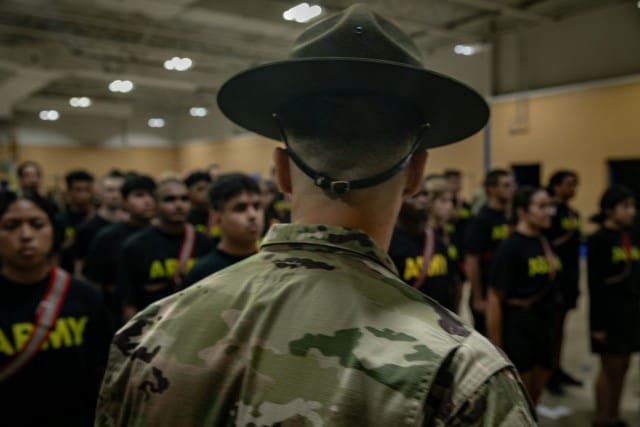
WASHINGTON — The Army has begun baseline cognitive assessments during Initial Entry Training, and all services will follow in the coming months, officials say.
The Army is taking a multipronged approach to reduce brain health risks, including improved awareness through a Force Health Protection Information Campaign; expanded brain health monitoring; identification of blast overpressure protective measures; tracking and monitoring blast exposure; and developing a comprehensive strategy to enhance and advance the science and medical care for brain injuries, said Col. Jama Vanhorne-Sealy, who oversees the Occupational Health Directive, Force Health Protection in the Office of the Surgeon General.
Fort Sill, Oklahoma, home of the United States Army Field Artillery School, was the first Army Initial Entry Training location to establish permanent cognitive testing, with all services scheduled to roll out the testing at all entry training locations by the end of 2024.
In addition, Army personnel will be evaluated at least every three years after initial screening, which can help identify any unusual cognitive change, Vanhorne-Sealy said. Early detection allows for early intervention to restore or enhance cognition, should it be necessary, she said.
A long-standing cognitive assessment program that began in 2007 has shifted from a pre-deployment and injury-centric model to a regular cognitive monitoring program, which means military health authorities can better help Soldiers throughout their career, said the Chief of Neurocognitive Assessment in the Office of the Army Surgeon General, Dr. Steven J. Porter.
The Cognitive Monitoring Program, much like the Army’s ongoing hearing testing, is a screening tool to assess for cognitive change in soldiers.
Cognitive assessment means documenting the way an individual thinks, reasons and remembers.
“Without ongoing testing, changes to a Soldier’s thought processes may not be evident until an event that could put both the Service Member or their unit in jeopardy,” Porter said.
Since June 2007, more than 3.4 million assessments have been collected, processed, and stored at the Neurocognitive Assessment Branch Data Repository at Joint Base San Antonio, Texas, to aid in treatment and track recovery after a concussive or suspected concussive event, Porter said. The testing identifies cognitive changes to help inform a Soldiers need for medical care, rest and recovery. Early identification can help avert further potential injury.
Vanhorne-Sealy said over time, advancements in understanding of brain functionality have led to improved testing, expanding the program to better evaluate areas of the brain potentially impacted by blast overpressure.
Blast overpressure is the sharp rise in atmospheric pressure from an explosive or firing of a weapon causing shockwave, traveling faster than the speed of sound. Blast overpressure exposure occurs when someone is close enough to physically feel the shockwave.
In a report by the House Committee on Appropriations regarding the Department of Defense Appropriation Bill of 2021, the Committee asked the Department of Defense to develop a cost analysis plan for conducting traumatic brain injury baseline testing for all new recruits.
Currently, a medical provider may request a Soldier’s cognitive baseline from the repository if it needed for treatment planning and tracking recovery. CMP authorities are working to develop a system to directly upload the test data to the Soldier’s medical record.
The CMP assessment tool is an FDA-approved medical device, and all test records are privileged information.
By Jonathan Austin, Army News Service

